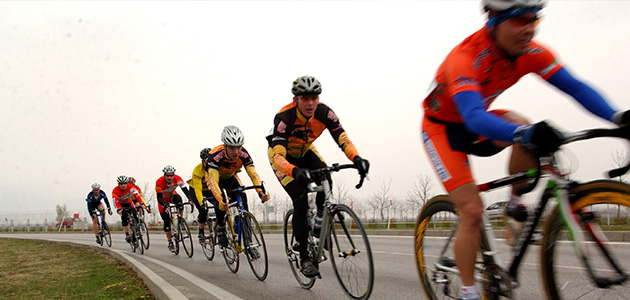07 August 2014
Cycling and Cruciformity
by Dr Mark Keown
This year my wife Emma and I joined a cycling group, NZ Cyclist (http://nz-cyclist.spruz.com) to get fitter and make some new friends. The group is full of great guys and gals, real salt of the earth kiwis, all of varying abilities. Four or five times a week we career around the streets of the Shore and into the countryside. It is hard work but great for fitness and friendship. We are quickly falling in love with cycling and the people.
Emma and I are now learning the art of cycling, which includes the idea of drafting. This is when you cycle on the wheel of the person in front of you being sucked along by those in front. Drafting is highly advantageous as you use far less energy than the person on the front, although there is some gain for the lead rider as well (http://www.exploratorium.edu/cycling/aerodynamics2.html). Indeed, riding in an echelon or peleton one can save up to 40% of energy. It is great sitting there using little effort behind others slogging along. Drafting a very strategic element of seeking to gain advantage. Drafting is also very exciting (some would say terrifying and dangerous) as you fly along at high speeds inches from the wheel in front, as the closer you get the better the gain.
Drafting is massively important in races like the recent Commonwealth Games, road cycling races, and tours like the Tour De France. While road cycling looks like other individual sports like running, the value of drafting means that it is very much a team sport. Whole teams are put together with the purpose of trying to get one rider over the line. Depending on the type of course, rider after rider sacrifice themselves using their energy to help a great climber or sprinter over the line. The lead rider drafts, saving as much energy as possible for the final climb or sprint. The quality of a non-leaders ride is measured by the performance of the lead rider, not where they come in the race. A victory for the lead rider is a victory for the team. So, while there may be 200 in a field, it may be only 20 who are trying to win the race. In each team, the others are trying to give themselves to help the one win.

All this has made me think that road cycling has a kind of christological or cruciform pattern. In Christian thought, Christ gave his life on the cross to ensure others “win,” that they are saved. He gave himself to save others. The essence of Christian life is to embody this pattern of self-giving for others as we go about our lives, even to the point of self-denial and suffering – we live to serve others (a cruciform life). In cycling, although sometimes a rider will be given opportunity to go for a stage win if it opens up on a certain day, in a team of ten, in each race or stage nine give up their “lives” for one. They give every bit of their energy to carry one person to victory. They “die” so that the other will “live.” They destroy themselves that one can have the energy to win the race. They deny themselves and sacrifice themselves for the glory of the other. They measure their greatness not by winning (indeed they may end up at the back of the field), but if their leader gains a great place. So, where a winner is found, there are many “insignificant” contributors who are the real heroes.
In most team sports, everyone in the team gets a trophy or medal if the team wins (e.g. RWC). In cycling, however, only one person from the successful team gets the medal despite the massive effort of those who gave themselves for the victory. Team road cycling is truly a team sport which embodies cruciformity and helps us understand what Christ and Christian life is all about. It is not about fame and significance, but about self-giving, service, humility, and sacrifice even with suffering to see the other “win.” This parallel I find fascinating and most intriguing. Keep living the cruciform life and maybe go cycling.
